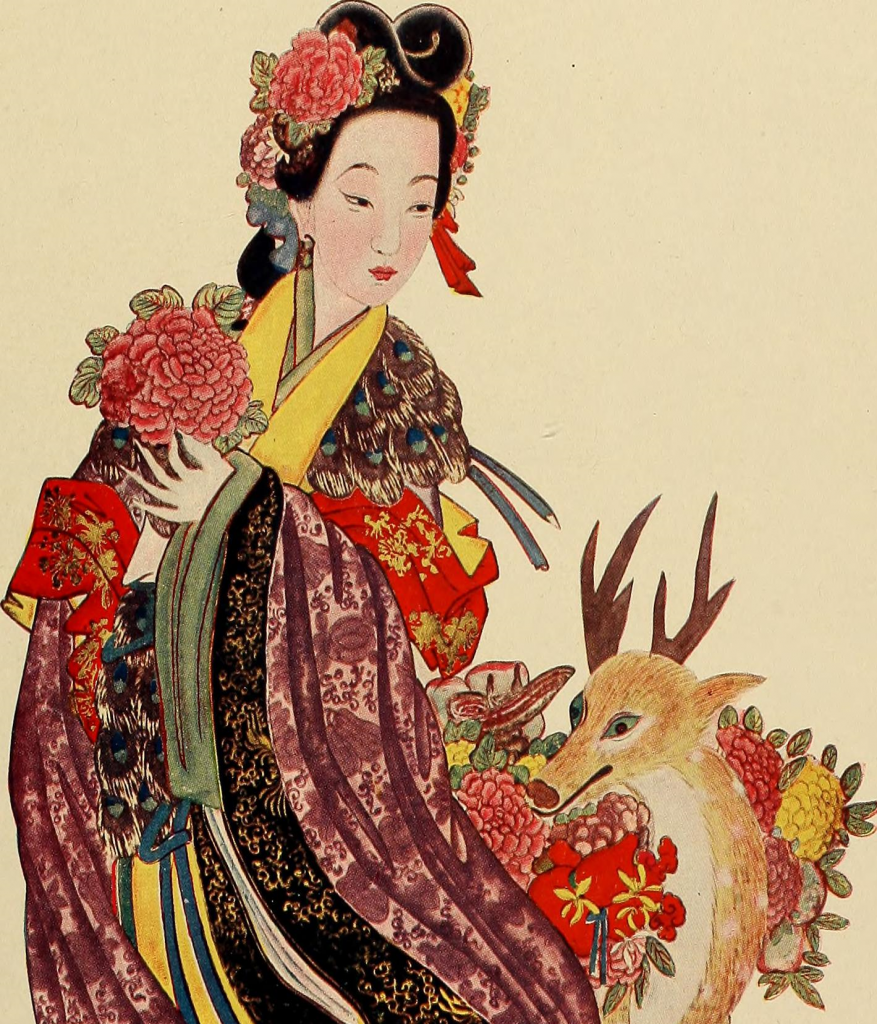The Symbolic Meanings of Flowers in Old China
Everyone loves flowers, but in China, their love goes beyond beauty. Flowers have symbolic meanings to ward off bad luck and promote success and good fortune.
In centuries past, when most people lived off the land, life was hard. Many died young, believed to be victims of evil spirits waiting to pounce. Even today flowers are carefully chosen by the superstitious Chinese to bring joy, and not give offense.
Qing Dynasty Clothing and Home Furnishings
Clothing and household furnishings were covered with floral embroidery. The large loose jackets and skirts with flat panels at front and back worn by Chinese women were ideal places to display intricately embroidered flowers. Since most women and girls bound their feet in the fashion of the time, their tiny shoes were also covered with delicate blossoms. The feet were even called golden lotuses, as they resembled the bud of that flower. Children’s tunics and trousers were important places on which to display lucky emblems to protect them from harm.
Lotus Flower, Peony, Orchid, Chrysanthemum and Plum Blossom: What They Mean
The most popular flowers were the peony, lotus, orchid, plum blossom and chrysanthemum. The peony is thought to be the Queen of Flowers and is a symbol of spring, a symbol of love and affection, as well as signifying wealth and distinction. An emblem of feminine beauty, it was the favorite flower of the Empress Dowager in the late 19th century. Pots of peonies surrounded her rooms in the Forbidden City in Beijing, and her gowns lavishly embroidered with the flower.
The lotus is a representation of chastity and perfection since it grows in mud but is not defined. An essential Buddhist emblem, Buddha is often shown sitting on the sacred lotus. It is a sign of summer and fruitfulness because the pods yield many seeds. For this reason, it was frequently used on children’s clothes to encourage more little brothers! It is a favorite of Chinese people as all parts of the flower are used: the stem and seeds are eaten, the leaves used for wrapping food, the yellow stamens as a cosmetic, and the flowers simply enjoyed.
Plum blossom is a symbol of winter and of long life since the flowers appear first on leafless branches. But it is also a promise of new beginnings and always an important part of the festivities at Chinese New Year. Gardeners believed the colder the weather, the more abundant the blossom. The orchid is a symbol of fragrance and refinement, as well as love and beauty. It was said a beautiful women’s breath is like the perfume of an orchid!
The chrysanthemum is a representation of autumn and appeared on clothing that is worn by older women. The flower also symbolized a life of ease and retirement from public office, so desired by harassed officials in Qing dynasty China. Red, purple and orange chrysanthemums are considered cheerful flowers. But don’t give white chrysanthemums, the color of mourning, or yellow, which is always used at funerals.
Antique Shops and Markets Yield Embroidered Treasures
Many fragments of these antique embroideries linger forgotten in attics in the west, in markets in China, or in corners of antique shops around the world. They serve to remind us that, though the flowers which inspired the embroiderers are long gone, their beauty lasts forever.

